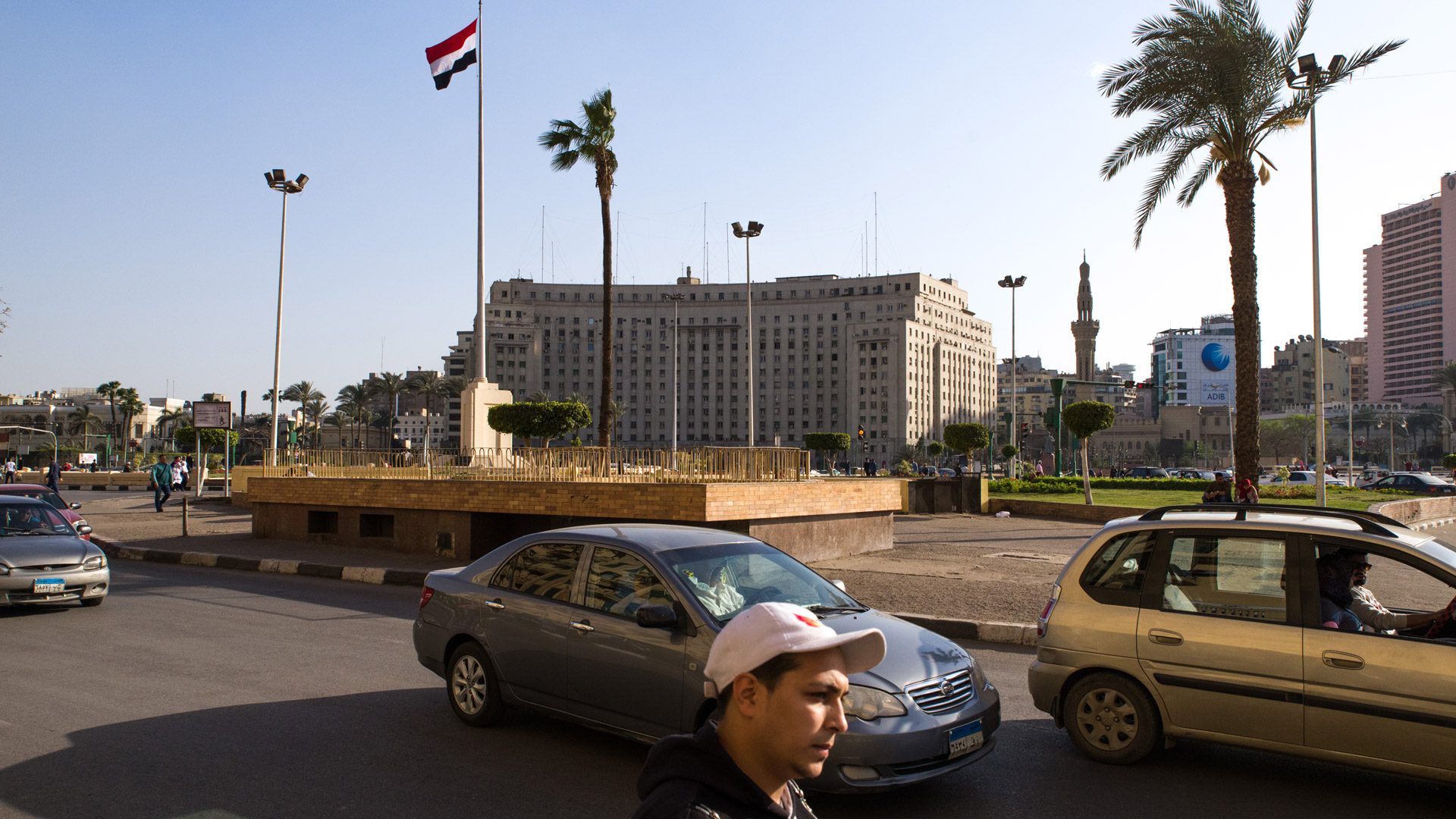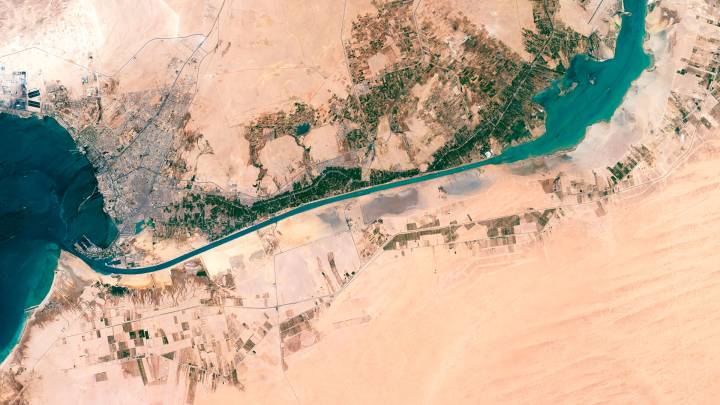Egyptian terror groups are plotting attacks from Libya, while arms smuggling across the border provides weapons to insurgents across the county. Cracking down will be difficult for Egypt’s president.
The scale of Egypt’s growing insurgency became clear to all the world when more than 300 worshippers were killed in a mosque on the Sinai Peninsula on 24 November. While certainly the deadliest, it was only the latest in a series of attacks targeting both security services and civilians in the Sinai and across the country, a deadly insurgency and campaign by terror groups which has targeted churches in Alexandria and Cairo, a bus carrying Coptic Christians to a monastery, and security services.
Numerous attacks have been staged in the Sinai Peninsula, where an Islamist insurgency has flourished since the bloody take-over of power by President Abdel Fattah al-Sisi in 2013, deposing Muslim Brotherhood President Mohamed Morsi and stoking resentment.
Meanwhile, lawlessness in Libya on Egypt’s western border has opened a door for militant groups and for weapon smuggling by both ideologically-minded militants and profit-seeking gunrunners.
Egypt has received the largest number of weapons from the Libya war
October was also a bloody month for Egypt’s security services. On the way to a raid on a suspected militant base, a convoy of policemen was ambushed by militants with RPGs in Bahariya Oasis, 135 kilometres southwest of Cairo. Despite initial news reports claiming that more than 50 security forces died, the Ministry of Interior firmly put the official death toll at 16 and 13 wounded. Ansar Al-Islam, an al-Qaeda-linked group, later claimed responsibility for the attack, in which 15 of its militants were also killed.
One militant, sole survivor of the operation, was captured after the 20 October firefight – Abdel Rehim El-Mesmari, a Libyan national. In an interview on a local television channel, he said that his group had entered Egypt and managed to penetrate desert areas close to southern governorates. From there, they had moved to the Wahat area in January.
El-Mesmari, who adopted extremist ideology, was part of a Libya-based terrorist organisation led by former Egyptian army officer Emad El-Din Abdel-Hamid, known in the group as Sheikh Hatem. He said the leader had previously joined militants affiliated with al-Qaeda in Derna, then established his own militant group – Ansar Al-Islam – aiming to spread Sharia law in Muslim countries. He decided to start with Egypt, and the group received training in camps inside Libya.
Terrorist cells inside Egypt work in close coordination with those in Libya, ties that have been boosted by the proliferation of weapon smuggling along the Egypt-Libya border, believes Mohamed Gomaa, a researcher in terrorism at the Al-Ahram Center of Political and Strategic Studies. That includes coordination between Salafi jihadists in Libya and Upper Egypt affiliated with ISIS and Al-Qaeda, he says. Cooperation between smugglers and militants has facilitated jihadi activity in the border area.
Egypt’s western border has been a hotspot for arms smuggling since the fall of Muammar Gaddafi’s regime in 2011, when huge arms stockpiles from Libya’s army fell into the hands of local militia groups. While some of the weapons were used and even destroyed in the ongoing fighting there, many others were smuggled out of the country.
“Egypt has received the largest number of weapons from the Libya war [of any neighbouring country],” says Mostafa Kamel El-Sayed, Professor of Political Science at Cairo University. (All interviews were carried out before the 24 November mosque attack.)
Illicit Libyan weapons are likely to fall into the hands of non-state actors, terrorists or insurgents in Egypt, says El-Sayed. Although there is no reliable data regarding the volume of armaments that migrated from Gaddafi’s stockpiles, El-Sayed estimates the number to be as high as 20 million items, weapons and ammunition flowing to insurgent groups across the country, including in the Sinai Peninsula.
Wider contagion
Over the past few years Egypt has carried out numerous anti-smuggling raids along the Salloum border crossing, in the north of the country. After the 20 October attack in Bahariya Oasis there was a further crackdown on border security, and the Egyptian Air Force carried out air strikes across the Egyptian-Libyan border, destroying vehicle convoys reportedly carrying weapons and ammunition into the country.
The counter-terror force was caught unprepared
But the countermeasures and the foiling of multiple smuggling attempts this year have not been enough to prevent militants infiltrating Egypt. The vast open Western Desert is practically impossible to secure, which makes it difficult for Egyptian security forces to track and fight terrorist groups that infiltrate, especially given the 1,150-kilometre border and Libya and Egypt's stretched military resources.
“The Western Desert provides space for militants roaming the area, with little to no military presence, limited in what it can do,” says Amanda Kadlec, a policy analyst specialising in the Middle East and North Africa at the RAND Corporation. “It can be an open door for groups like ISIS and Al-Qaeda.”
She added that Egypt does not possess the reliable ground capacity needed in order to gather intelligence and be able to control movements across the Libyan border.
Meanwhile, there is little sign that the sprawling chaos across the border in Libya will end. According to El-Sayed, Libya’s size – 1.76 million square kilometres, almost twice the size of Egypt – coupled with its small population of around 6.5 million inhabitants and a weak military apparatus, make the task of preserving the country’s national security much more difficult than Egypt’s. And foremost in the Libya quagmire is lack of a central government and general instability in Libya, as two rival governments have been battling the Islamist militant factions that have flourished since Gaddafi’s overthrow.
The east of the country, bordering Egypt, is under the control of Egypt-backed General Khalifa Haftar and his self-styled Libyan National Army [LNA], which is ostensibly backed by Egypt and other powers including the United Arab Emirates. Despite its name, the LNA is “a loose coalition of militias, not a real united army”, says Kadlec. “Haftar does not have control over every single group under his banner.” The lack of loyalty undermines Haftar’s ability to secure eastern Libya and prevent the flow of weapons and militants.
The growing militant activity and arms trafficking in Libya comes after ISIS has suffered substantial territorial losses in Syria and Iraq, and fighters have headed to Libya as a fallback station to carry out its operations. Since being pushed out of the Libyan cities of Derna and Sirte, the group has resorted to more asymmetrical warfare, waging sporadic ground operations in Libya, says Kadlec.
It’s fertile ground for terrorist groups, including radical Egyptian groups like the Al-Qaeda-linked al-Mourabitoun group or Ansar Al-Islam, which have used Libya as a staging ground to launch attacks inside Egypt, says Gomaa. Al-Mourabitoun was founded by Hisham al-Ashmawy, a former Egyptian army colonel who trained with a special forces unit. He was part of ISIS’s Egyptian affiliate in Sinai before defecting and fleeing to Derna, where he announced the formation of a new group affiliated with al-Qaeda.
Meanwhile, Gomaa says Salafi jihadists are currently going through a phase of dismantling and re-making whereby new cells which spring from ISIS and Al-Qaeda are being formed in Libya, with shifting allegiances to either group.
Delivering a response
While President Sisi has promised he will deliver a brutal response to the 24 November mosque attack, analysts contend that Egypt’s security forces are frequently outmanoeuvred by militants or beset by incompetence, while the cross-border links with Libya demonstrate the scale of the contagion.
Although there is communication and some kind of military cooperation between Egypt and Haftar’s army, weak governance in Libya hampers security along the shared border.
While Egypt has redoubled its efforts to secure its western border against the Libyan chaos, its security units are often not adequately equipped and trained to confront unconventional attacks, as the 20 October shootout in Wahat showed.
“The counter-terror force was caught unprepared, it was armed at a lesser level than the militants. As if they were going to catch drug smugglers, not armed fighters,” observes Gomaa, noting there was also no coordination between the police and army personnel.
El-Sayed stresses that Egypt will need to take new measures to more effectively counter the threat coming through the Libyan border. “The Egyptian state will have to redistribute the armed forces to ensure a larger number of troops in the south-western area, increase weaponry and restructure the military forces suitably to better confront armed militants near the border.”
Kadlec questions Egypt’s systematic use of high-powered military retaliation after major internal security incidents, pointing to Egyptian air strikes inside Libya in response to the twin church bombings in Tanta and Alexandria last April and the mass beheading of Egyptian Christians in Libya in 2015 as examples. “The Sisi government wants to send a message to Egyptians that they are the defeaters of terrorism and have everything under control, when that masks deep insecurity in fact,” she says.
Just a week after the 20 October shootout, Egypt’s Interior Ministry ordered a reshuffle in the high security ranks. The decision has raised doubts as to whether it will effect real change in the performance of Egyptian security forces. “El-Sisi wants to show that he’s taking care of business by firing a few top security personnel,” says Kadlec. “That’s just blame-shifting.”






